Page snapshot: Quick facts about Japanese stiltgrass (Microstegium vimineum), a globally distributed weed.
Topics covered on this page: What is Japanese stiltgrass?; How is Japanese stiltgrass identified? Where did Japanese stiltgrass come from?; How does Japanese stiltgrass spread?; What are the impacts of Japanese stiltgrass?; How is Japanese stiltgrass controlled?; Resources.
Credits: Funded by the National Science Foundation. Any opinions, findings, and conclusions or recommendations expressed in this material are those of the author(s) and do not necessarily reflect the views of the National Science Foundation. Page by Naomi Schulberg (2023).
Updates: Page last updated June 5, 2023.
Image above: Japanese stiltgrass (Microstegium vimineum). Photo by Leslie J. Mehrhoff, University of Connecticut (Bugwood.org, Creative Commons Attribution 3.0 License, image cropped).
What is Japanese stiltgrass?
Japanese stiltgrass (Microstegium vimineum) is an annual grass found in a variety of habitats, including wetlands, floodplain forests, frequently disturbed areas, and areas modified by humans, such as roadsides. It outcompetes many native species, especially in low-light conditions. It is considered an invasive species in the United States.
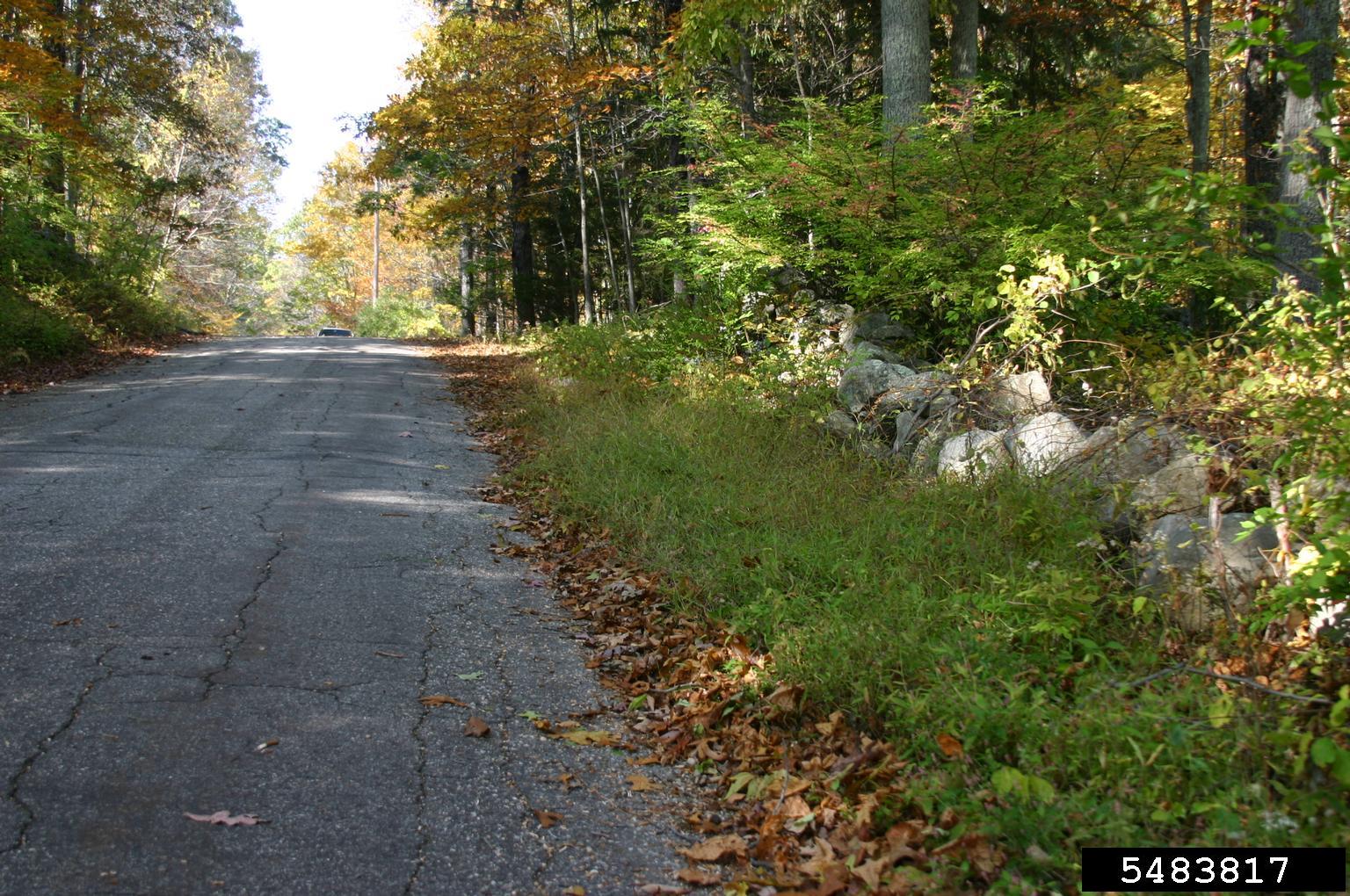
Japanese Stiltgrass (Microstegium vimineum) growing alongside a road. Photo by Leslie J. Mehrhoff, (Bugwood.org, licensed under a Creative Commons Attribution-Noncommercial 3.0 License).
How is Japanese stiltgrass identified?
Japanese stiltgrass has entire, alternate leaves that are between 1 and 3 inches long (about 2.5 to 7.6 centimeters long) and have a pale midrib. Unlike most native grasses, the leaves of Japanese stiltgrass are smooth when rubbed in both directions. It has a sprawling habit, and reaches heights of 3.5 feet (about 1 meter). It grows from spring to fall and releases abundant seeds.
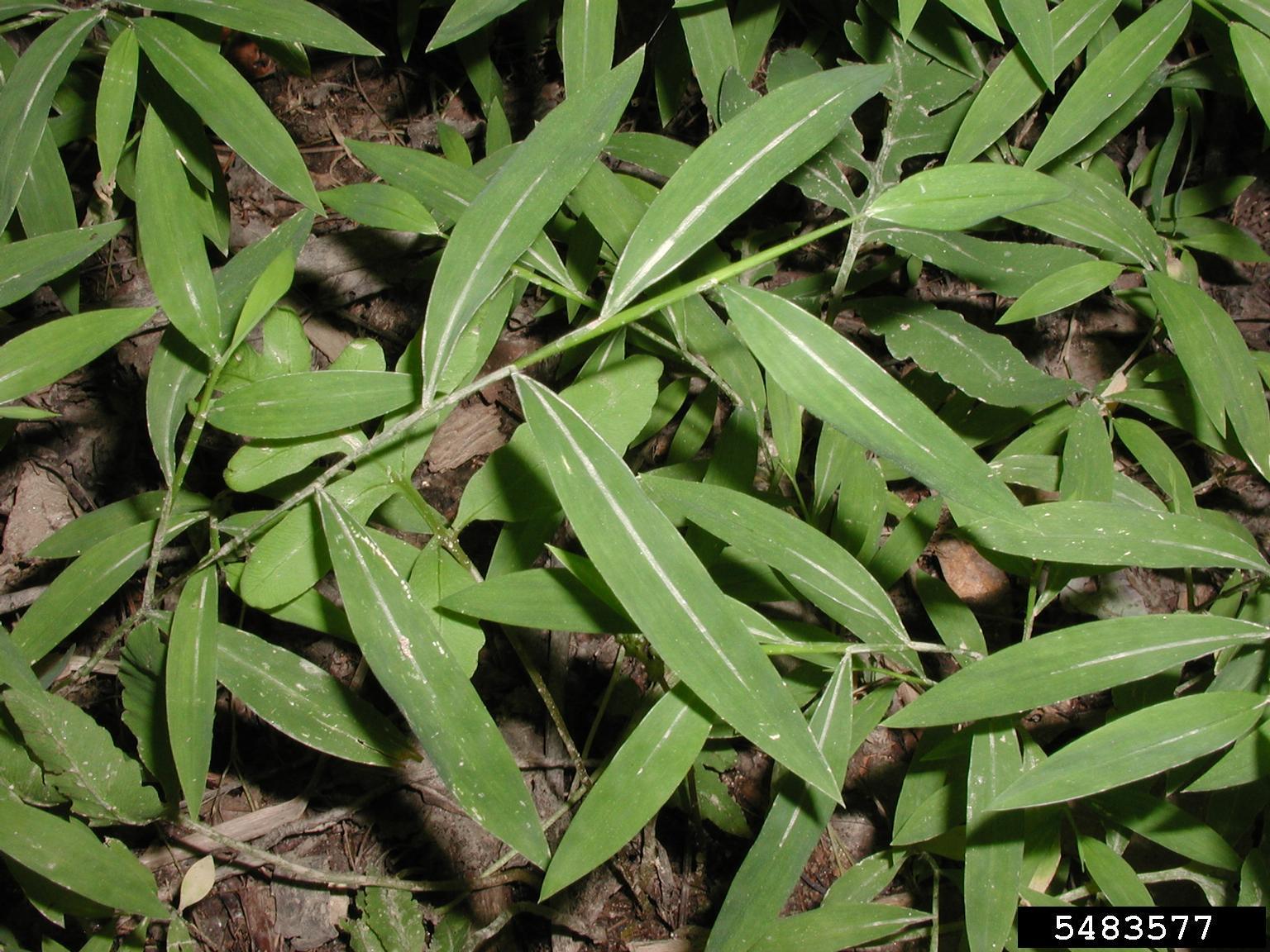
Japanese stiltgrass (Microstegium vimineum). Photo by Leslie J. Mehrhoff, (Bugwood.org, licensed under a Creative Commons Attribution-Noncommercial 3.0 License).
Where did Japanese stiltgrass come from?
Japanese stiltgrass is native to China, India, Japan, Korea, Malaysia, and the Caucasus Mountains. It has spread beyond its native range throughout the world and is now found on every continent except for Antarctica.
Japanese stiltgrass was first documented in the United States (in Tennessee) in 1919. It is thought to have been introduced as packing material for porcelain. Today, it can be found in 24 U.S. states and territories and is considered invasive in 15 states.
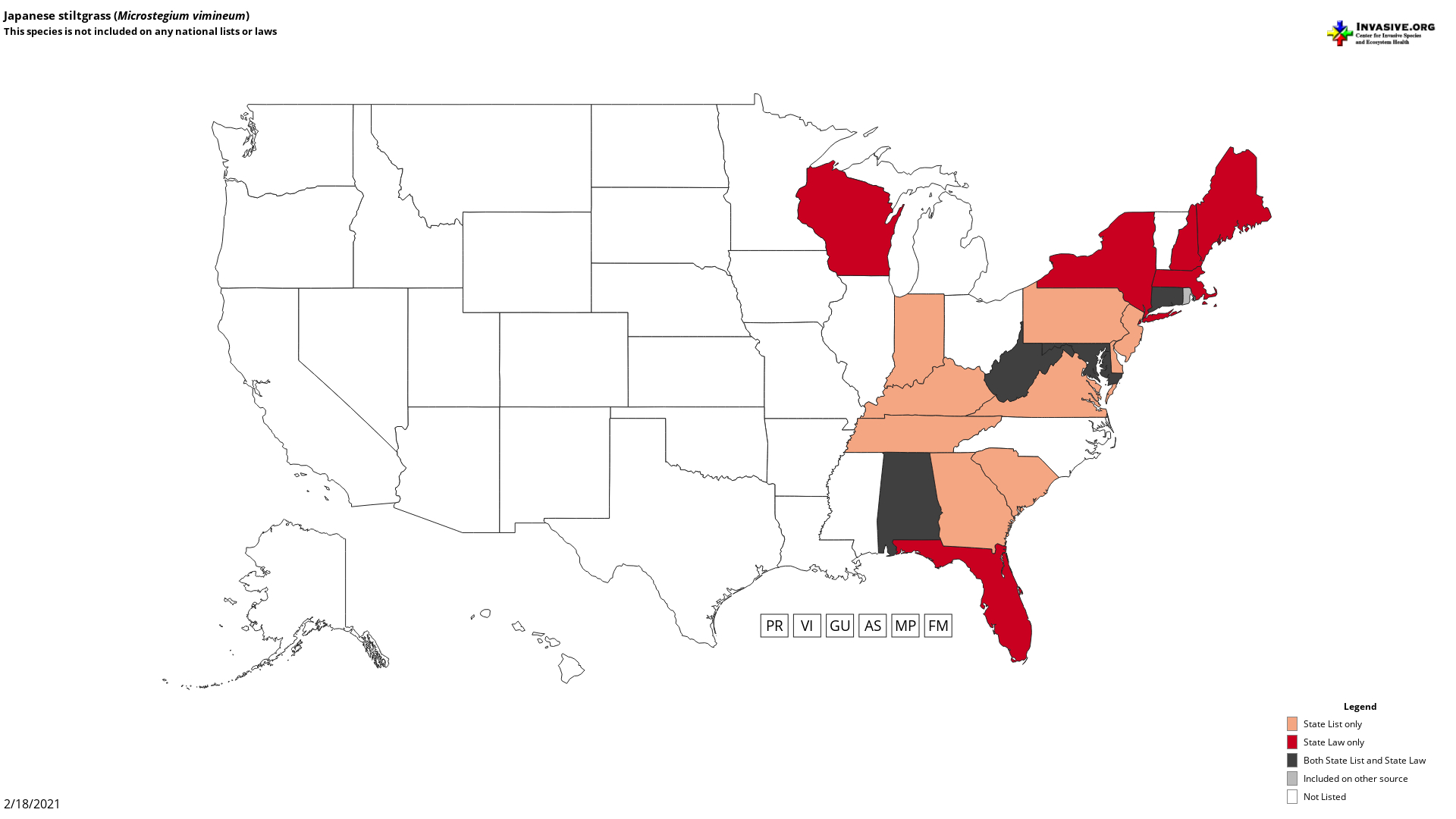
Map of states where Japanese Stiltgrass is considered invasive. Image from EDDMapS, 2023 (Early Detection & Distribution Mapping System, The University of Georgia Center for Invasive Species and Ecosystem Health).
How does Japanese stiltgrass spread?
Japanese stiltgrass is a colonial species, and individual plants can spread rapidly and extensively during their lifetimes. Japanese stiltgrass can spread via stolons (horizontal stems) that produce roots at the nodes. It also reproduces sexually, with each individual producing up to 1,000 seeds per year. Seeds are transported through movement of water and soil and are also carried by humans and other animals. The seeds may germinate in the soil up to 3 years after being produced.
Japanese stiltgrass has been documented to spread especially rapidly in environments with white-tailed deer. White-tailed deer preferentially eat native plants over Japanese stiltgrass, facilitating its expansion and proliferation.
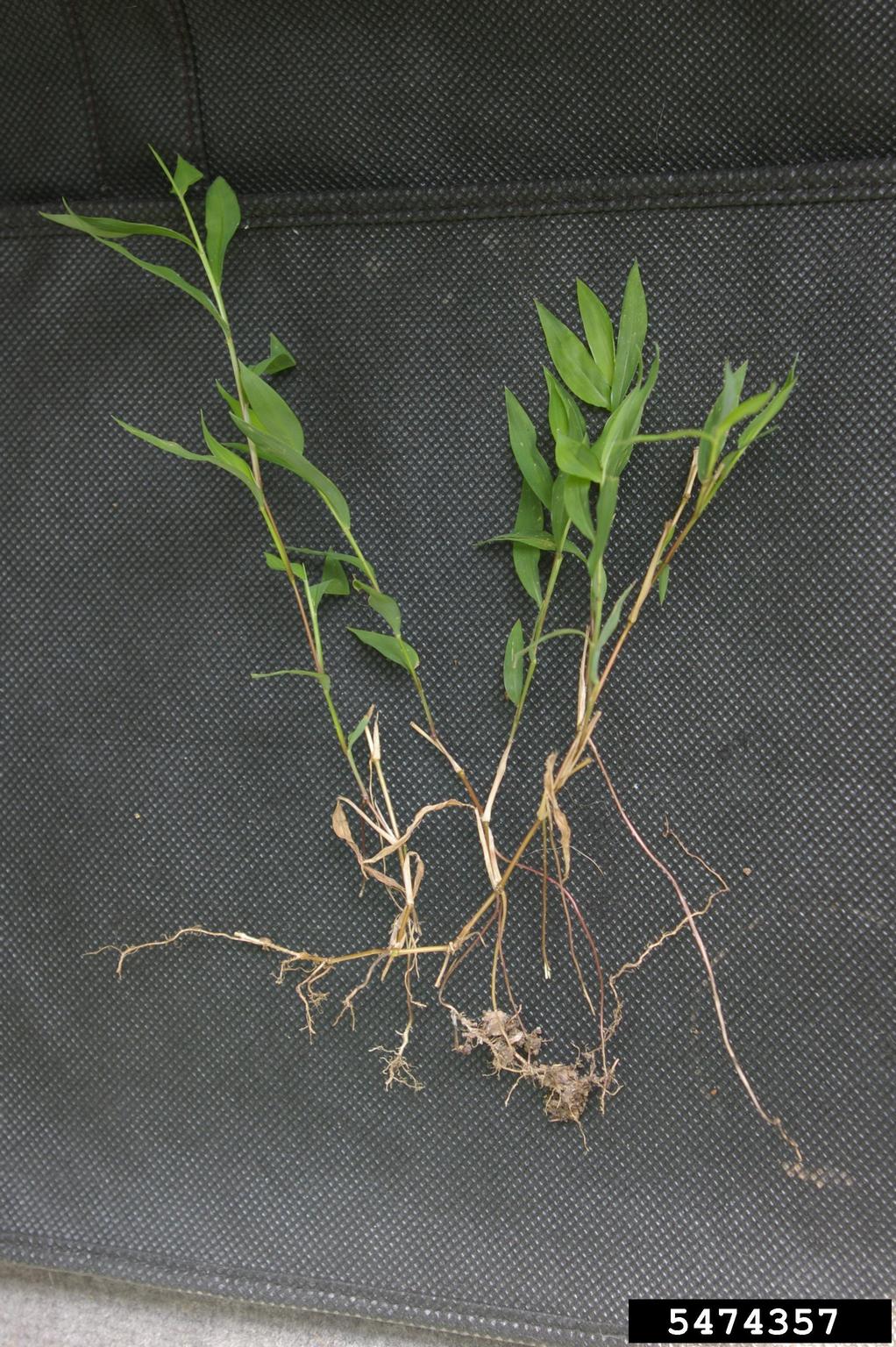
Japanese stiltgrass (Microstegium vimineum). Photo by Nancy Loewenstein (Bugwood.org, licensed under a Creative Commons Attribution-Noncommercial 3.0 License).
What are the impacts of Japanese stiltgrass?
Due to its prolific seeding and ability to survive in a variety of conditions, Japanese stiltgrass outcompetes native plants, especially in low-light and low-nutrient conditions. As it spreads, it creates monocultures (in other words, areas dominated by only one species). Additionally, Japanese stiltgrass is not preferred by most grazing animals, including white-tailed deer, goats, and horses, so its spread impacts food chains.

Japanese stiltgrass (Microstegium vimineum) infestation. Photo by Chris Evans (Bugwood.org, Creative Commons Attribution-Noncommercial 3.0 License).
How is Japanese stiltgrass controlled?
Currently, both physical and chemical management practices are used to control the spread of Japanese stiltgrass. While mechanical removal by hand avoids the use of herbicides, it may not remove entire plants and often disturbs the soil, which further facilitates the growth of Japanese stiltgrass. As such, chemical removal is often considered to be more effective, and several chemical herbicides are applied to Japanese stiltgrass at various stages in its life cycle.
Alternative management techniques include covering areas with mulch (wood chips and leaf litter) and planting native grasses. Planting competitive native grasses can help cultivate a more diverse and natural ecosystem and pave the way for future native ecosystems to develop. Native rye grasses (Lolium species) are one of the few types of native grasses that can compete with Japanese stiltgrass.
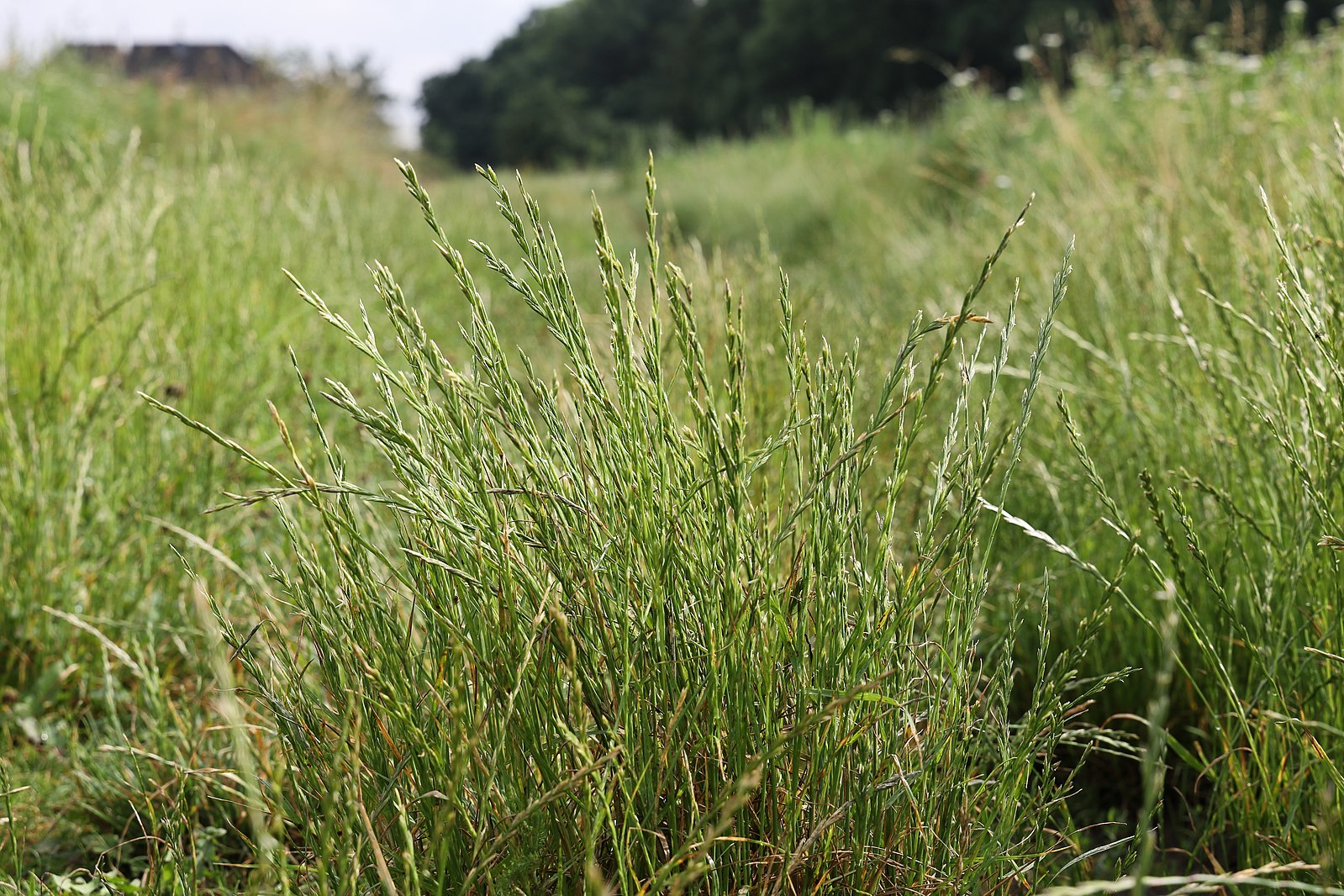
Ryegrass (Lolium perenne), a species that can compete with Japanese stiltgrass. Photo by T. Kebert (Wikimedia Commons, licensed under a Creative Commons Attribution-Share Alike 4.0 International license)
Resources
Websites
Japanese stiltgrass (New York Invasive Species Information): https://nyis.info/invasive_species/japanese-stiltgrass/
Japanese stiltgrass (Penn State Extension): https://extension.psu.edu/japanese-stiltgrass
Articles
Swearingen, J. M., and S. Adams. 2008. Fact sheet: Japanese stiltgrass. Plant Conservation Alliance's Alien Plant Working Group. PDF: https://www.invasive.org/alien/fact/pdf/mivi1.pdf



